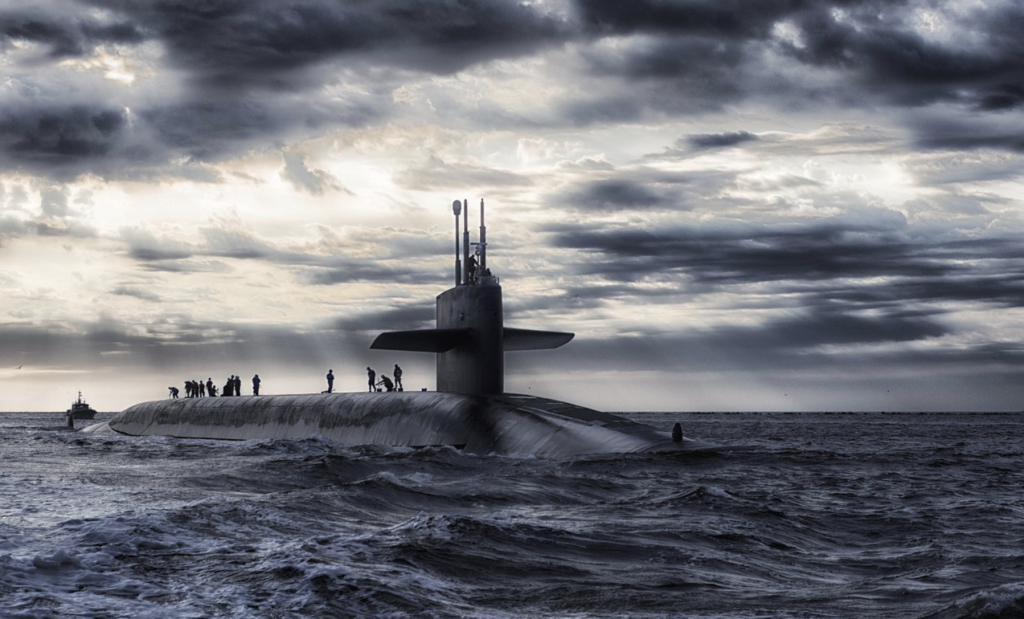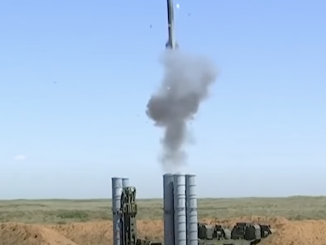
In recent years, India has embarked on an ambitious program of expanding its sea-based deterrent, with up to six to eight nuclear ballistic missile submarines (SSBNs) being planned. The expansion, along with the increasing Sino-Indian competition in the Indian Ocean region, and a border clash between the two countries during 2020, aroused concerns regarding the nuclear deterrence relationship between them. However, there are little prospects for disturbance in their deterrence relationship as a result of India’s expanding sea-based deterrence. However, the expansion has potential for disturbing deterrence stability vis-à-vis Pakistan, in turn disturbing the complex triangular China-India-Pakistan relationship in the region.
Nuclear Doctrines of China and India
Since the 1950s, China sought to develop nuclear weapons in order to have a deterrent of its own against potential threats from the United States (after the Taiwan crisis and Korean War) and from an uncertain Soviet ally. This ended in China testing its nuclear weapons in 1964, making it the last nuclear power among the permanent members of United Nations Security Council (UNSC). China’s nuclear doctrine is characterized by: a No First Use (NFU) policy; security assurance to non-nuclear weapon states regarding use of nuclear weapons; limited second strike capability to ensure survivability; no deployment of nuclear weapons outside Chinese territory; and support for non-proliferation and disarmament of nuclear weapons.
During the same decade, India started its own nuclear weapons program owing to the sense of insecurity after the 1962 Sino-Indian War, and the diplomatic and military pressure from the US and its allies supporting Pakistan during the 1965 and 1971 wars. Ultimately, India became the first nuclear weapons state that was not a permanent UNSC member after testing nuclear weapons in 1974. India states its tests were peaceful nuclear explosions aimed only at deterrence, and did not overtly declare using nuclear weapons for offensive purposes. For this reason India did not have a formal nuclear doctrine for a long time, until the 1998 Pokran-II tests and the consequent release of a semi-official Draft Nuclear Doctrine in 1999. In 2003, India declared an official nuclear doctrine that stated its key features as: obtaining credible minimum deterrence; adopting a No First Use posture; no use of nuclear weapons against non-nuclear weapons states; retaining the option of using nuclear weapons in retaliation to biological or chemical weapons; and commitment to global disarmament.
China-India Deterrence Relationship: Factoring India’s Sea-Based Deterrence
Sino-Indian relations have become increasingly strained in recent years, particularly after the Galwan Valley crisis that brought both the two countries face to face over border disputes in 2020. A look at the nuclear posture of both countries presumes a stable deterrence relationship. Both countries have adopted NFU policies and have declared minimum deterrence as the strategy of choice for their nuclear arsenals. However concerns have been raised recently that India might revise its NFU policy. It was first indicated in 2014 when the BJP announced in its manifesto to revise the no first use policy. Though it was later retracted, the idea was again reflected in 2016 in Indian Defence Minister Manohar Parekar’s statement where he questioned India’s NFU policy, citing it, however, as a personal remark. Similar ambiguity was conveyed by incumbent Defence Minister Rajnath Singh in 2019 when he said India’s commitment to NFU depends “on the circumstances.”
India acquired its sea-based deterrence with commissioning of the nuclear ballistic missile submarine (SSBN) INS Arihant, or S2, in 2016. The platform was initially equipped with K-15 ballistic missiles with an operational range of 750 km. In January 2020, India also test fired a K-4 submarine launched ballistic missile (SLBM) with a range of 3500 km. Additionally, India plans to develop submarine based K-5 and K-6 missiles with longer ranges and Multiple Independent Re-entry Vehicle (MIRV) capabilities for SSBNs acquired in coming years. Some analysts point out that India’s perusal of sea-based deterrence aims to ensure second-strike capability vis-à-vis China. Yet others are concerned that despite SSBNs’ traditional association with second strike capability, they can also provide an incentive for first strike to carry out counterforce and tactical targeting.
In their present state, India’s SSBN platforms with an operational range of 3500 km are not capable of carrying precision countervalue strikes in mainland China. This leaves either the option of travelling long distance into the South China Sea through Malacca, Lombok or the Sunda straits, which may presently be restricted due to constraints in the fuel cycle of Arihant’s nuclear reactor. Or there is the other option for India to use K-15 missiles with an operational range of 700 km for counterforce or tactical strikes, in revision of its NFU posture. Such utility of Indian SSBN platforms against China in a limited war would also be problematic, as any adversary who is at a disadvantage on the tactical level may immediately resort to use of nuclear weapons at the strategic level (countervalue targeting to cause massive and unacceptable damage). Therefore, India’s sea-based deterrence in its present state is less likely to disturb the deterrence relationship between India and China. This was reflected in a comment by a Chinese academic, who said technologies like SSBNs are merely “India’s ticket to the big powers club.” For the same reason, India seeks to expand its SSBN fleet.
At the same time, these developments in India’s sea-based deterrence trigger threat perception and threaten strategic stability vis-à-vis Pakistan. Increasing ambiguity around India’s NFU and the limited utility of India’s sea-based nuclear weapons against China strengthens the perception in Islamabad that India may use its SSBN platforms for a first-strike against Pakistan. However due to its limited nuclear arsenal, a first-strike by India (either against Pakistan or China) also leaves India vulnerable, because it provides impunity for starting a nuclear or conventional conflict against India, in absence of sufficient nuclear weapons to retaliate. This provides further motivation for India to expand its nuclear arsenal to balance the deterrence triangle that covers both China and Pakistan, resultantly deteriorating strategic stability in the region.
Conclusion
Despite increasing Sino-Indian competition, India’s changing NFU posture, and placing greater emphasis on China in its nuclear strategy by pursuing sea-based deterrence, among other actions, the Sino-Indian deterrence relationship remains the same. The apparent motivation behind India’s acquisition and expansion of its SSBN fleet is to maintain a second-strike capability vis-à-vis China. Yet the development of the fleet, along with India’s changing posture around the NFU, suggests that the platforms might be used possibly for a first strike and counterforce targeting. This effects strategic calculations and increases the threat perception in Islamabad. Therefore it is important for all the stakeholders in the region to realize the implications of India’s sea-based deterrence on strategic stability in the region, and take necessary measures, including ensuring nuclear restraint and promote efforts for dialogue on arms control in the region.




Be the first to comment